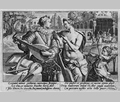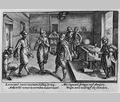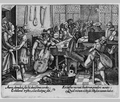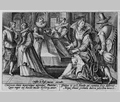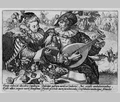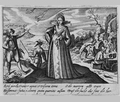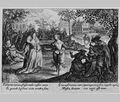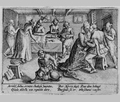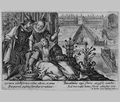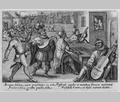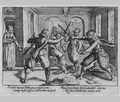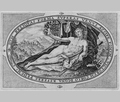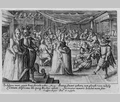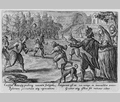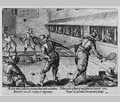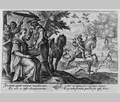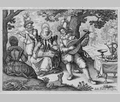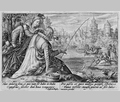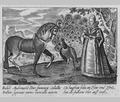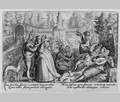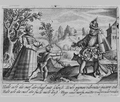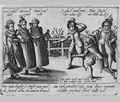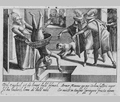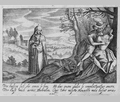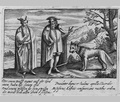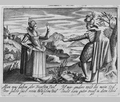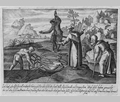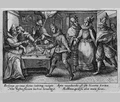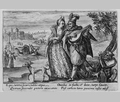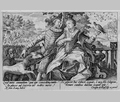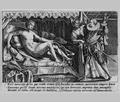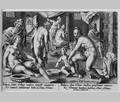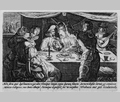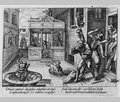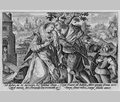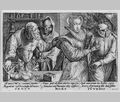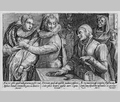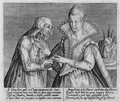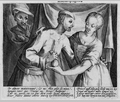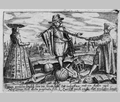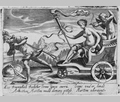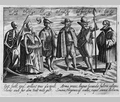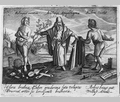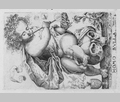Introduction
This is our edition of Nieuwen ieucht spieghel of 1617. We intend to add a full introduction to this edition. For now we have limited ourselves to the bare essentials.
About the Authors, Publisher and Illustrator
For a long time, nothing was known about the author(s) of the Nieuwen ieucht spieghel (New Mirror for Youth).1 On the title-page, any information about the book's origin is missing. No publisher's or author's name is mentioned, and reference to a year or city of publication is also absent. The word 'nieuwen' (new) in the title suggests that this book was a reprint of an earlier edition. Indeed, the Nieuwen ieucht spieghel had a predecessor in a book called Jeught spieghel, written by an author hiding behind the initials Z.G.H.P.H.S., and published in 1610. These initials belonged to Zacharias Heyns, who published a number of emblem books. We do not know, however, whether he was responsible for the publication of the Nieuwen ieucht spieghel as well.
The Nieuwen ieucht spieghel opens with a number of devices, among which we find the device of Boudewijn Wellens, a Frisian poet-composer who earned a living as major of the Frisian town Franeker. The origins of the Nieuwen ieucht spieghel were therefore once situated in Friesland, but it seems dubious to establish Wellens's authorship on the base of this solely occurence. Most frequently seen in the Nieuwen ieucht spieghel is the proverb 'Troost in lijden' (Comfort in times of misery); it is not known which authors used this saying as his of her own. Also important are the references to the province Gelderland made a number of the subscriptio's of the Nieuwen ieucht spieghel. For instance, embleem bears the references: '...om dat ic nu moet scheyden / Van dit schoone Ghelderlant' en 'Binnen d'Arnhemsche Stadt' (because I now have to leave this beautiful Gelderland' and 'Within the city of Arnhem'). These references within the Nieuwen ieucht spieghel are supplemented by some evidence from outside pointing in the same direction. In the catalogue of the German minister Draudius, drawn up after his death, the title of the Nieuwen ieucht spieghel is accompanied by the notation 'Arnheim by Janssen / 4. 1617' (in Arnhem, by Janssen, in 1617). Jan Jansz was a printer and publisher of a number of songbooks. It is not very likely he was the author of the Nieuwen ieucht spieghel, though, for there are no other books or poems subscribed to him.
Another clue about the authorship of the Nieuwen ieucht spieghel is found in the illustrations of the book. Six of them are signed by 'Crispijn vande Passe de oude' (Crispijn vande Passe the elderly), and the others (not signed) almost all derive from books illustrated by Crispijn vande Passe the elderly. In between 1610-1620 most of the work by Vande Passe is published by Jan Jansz., who also published emblem books by Zacharias Heyns during the same period. All three men lived in the eastern part of the Netherlands, far from Holland, the leading cultural province.
It is very likely Jan Jansz. took the initiative to publish the Nieuwen ieucht spieghel. Crispijn vande Passe the elderly probably could supply him with the engravings needed, and was also asked to design the title-page of the book. Zacharias Heyns had had some good experiences with Jansz. in the past, and worked in Zwolle as a publisher himself in the years the Jeucht spieghel and Nieuwen ieucht spieghel were printed. Before, he had lived in Amsterdam, establishing the ''t Wit Lavendel' (The White Lavender, a chamber of retoriciens).
About the Nieuwen ieucht spieghel
When we compare the Jeucht spieghel to the Nieuwen ieucht spieghel it becomes clear that so much has changed in the 'new edition', that it is confusing and even misleading to speak of a 'new edition'. The book was enlarged drastically (from the original 32 pages to 232, from 14 engravings to 49) and occasional poetry was added. The printing history of the book is complicated. All eight surviving copies are dated around 1620. It is not certain they are all related to the 1617-edition of Jansz.
Hubert Meeus has established that Nieuwen ieucht spieghel originates in the tradition of Dutch emblem book (more specific: emblem books from Holland) and German alba amicorum. The dedication of the book, [Titlepage], resembles Heinsius's Aen de Joncvrouwen van Hollandt from 1601 and Hooft's Voorreden tot de ievcht from 1611. This situates the Nieuwen ieucht spieghel within the tradition of Dutch emblem books especially meant for the youth. Besides this, influence from German books such as the Pugilllus (1608) from Jacob van der Heyden is obvious. The two books share 14 engraving and their German and Latin subscriptio's. In 1618 Van der Heyden published the Speculum Cornelianum, and this book holds all engravings from the Nieuwen ieucht spieghel.
As stated earlier, almost all engravings in the Nieuwen ieucht spieghel can be traced to books illustrated by Vande Passe: 19 derive from his Hortus Voluptatum, Jeucht spieghel, Academia sive Speculum vitae scholasticae, Mimicarum aliquot Facetiarum and Libellum decliciarum. 2 These engravings had proven to be succesful before, and this is probably the reason the publisher dare to undertake the publication of an even larger collection of emblems. The price of Nieuwen ieucht spieghel must have been high, due to this extra set of engravings, but the market was yet to be saturated. The re-use of the copperplates turned out to be lucrative business.
Looking at the content of the Nieuwen ieucht spieghel it becomes clear its collector must have been familiar with Den nieuwen lusthof (The New Eden, 1602). Many of the songs originate from this book. Besides, a number of texts from Heyns's Jeucht spieghel were re-used. The lyrics can be characterized as playful, rather than didactic. In the first emblem, Eneruant animos cytharæ [1], a young men sings about love, being left by Venus and Cupid with nothing than pain and sorrow. In this emblem, the tune is set: Petrarchan motifs play an important role through the book. People drink, make love, dance, sing and mourn their beloved but not mutual love. Only the German and Latin subscriptio's bear some slightly didactic moralisations. But the emblem carry a lightness and playfulness that is rarely seen elsewhere in the corpus of Dutch love emblems.
Copy Used for This Edition
In making this edition of Nieuwen ieucht spieghel we have used the copy of the edition of 1617 conserved in the Royal Library (The Hague), shelf number 843 B 25.
Transcription
We have transcribed the full text from the The Hague copy and encoded this text using TEI mark-up, to allow for flexibility in presentation and non-destructive editorial enhancement of the text. The full Project Guidelines for transcription, editorial intervention and indexing of the text are available elsewhere on this site. We have chosen to code the Latin/German texts underneath the pictures in the Nieuwen ieucht spieghel as the mottoes of the emblems, since not all textual and visual units in the book have the same structure and appearance.
Translations
Almost half of the translations of the Latin mottoes3 are based on
Veldman, Profit and pleasure: print books by Crispijn de Passe .
.
Literature
The full Emblem Project Utrecht bibliography may be accessed using the menu option at the top of this window. A selection of literature relevant to Nieuwen ieucht spieghel follows here.
-
Landwehr, Emblem and Fable Books

- Veldman, Crispijn de Passe and his progeny

- Veldman, Profit and pleasure: print books by Crispijn de Passe

- Meeus, In dees spieghel

- Kolfin, De tegenstelling, de traditie en de paradox

- Vande Passe, Four Lessons about Love

- Vande Passe, Academia

- Vande Passe, Deliciarvm juuenilium libellus elegantissimus

- Vande Passe, Hortvs volvptatvm

- Van der Heyden, Speculum Cornelianum

Notes
 , Veldman, Crispijn de Passe and his progeny
, Veldman, Crispijn de Passe and his progeny , Veldman, Profit and pleasure: print books by Crispijn de Passe
, Veldman, Profit and pleasure: print books by Crispijn de Passe and
Kolfin, De tegenstelling, de traditie en de paradox
and
Kolfin, De tegenstelling, de traditie en de paradox .
.![[H O M E : Emblem Project Utrecht]](/static/images/rd-small.gif)






